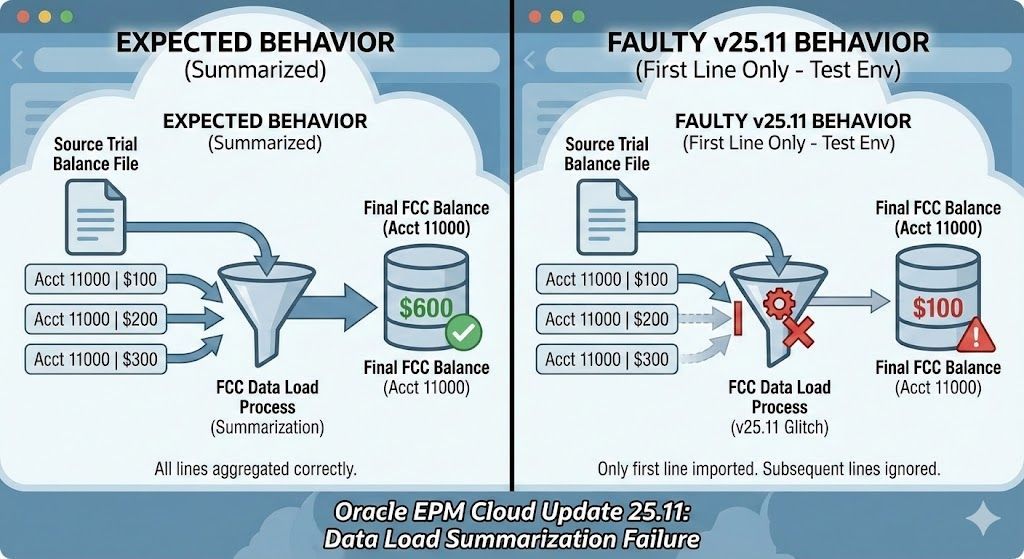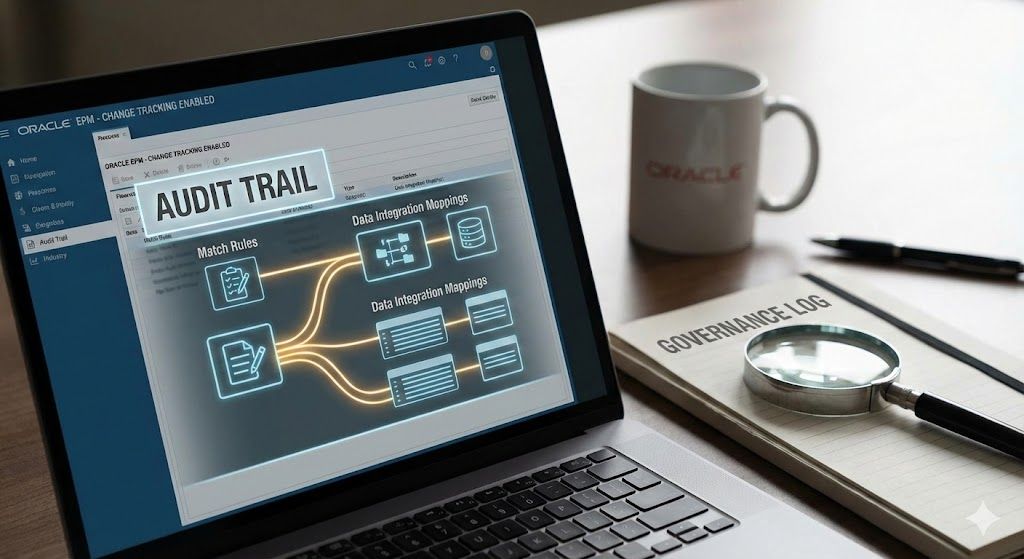Enterprise Journals in Oracle EPM: A Powerful Tool for Account Reconciliation
Listen to Tresora and Ledgeron's chatting about this blog post:
Enterprise Journals in Oracle EPM: A Powerful Tool for Account Reconciliation

Oracle Enterprise Performance Management (EPM) offers a robust suite of tools to streamline financial processes, and one of its unsung heroes is Enterprise Journals (EJ). While often overlooked, EJs provide powerful functionality, particularly when it comes to reconciling accounts or capturing the current and deferred tax provisions.
Understanding the Power of Enterprise Journals
Enterprise Journals are essentially a mechanism for making adjustments within your EPM system. They offer a centralised platform to record journal entries that impact various components of your financial reporting, including balance sheet accounts, income statement accounts, and even custom dimensions.
Why Use Enterprise Journals for Account Reconciliation?
The reconciliation process, typically occurring after the books are closed, often involves identifying and correcting discrepancies. This is where EJs shine. Here's why:
- Precision and Control: EJs allow for highly granular adjustments, targeting specific accounts and dimensions. This level of precision is crucial for accurate reconciliation.
- Audit Trail: Every EJ entry is meticulously tracked, providing a comprehensive audit trail. This is essential for maintaining compliance and transparency.
- Workflow Management: EJs can be routed through approval workflows, ensuring that all adjustments are reviewed and authorised by appropriate personnel.
- Integration: EJs seamlessly integrate with Oracle Fusion ERP. It is a functionality delivered with Oracle Financial Consolidation and Close (FCCS), which can be deployed to other EPM components, such as Account Reconciliation (ARCS) and Tax Reporting (TRCS), facilitating a streamlined and unified process.
- Available in the EPM interface: the users create the journal entries directly from the reconciliation interface, without needing to leave it and connect to another application. The EJ created is then available to reviewers of the reconciliation, giving them assurance the adjustments have been addressed and corrected timely.
Key Use Cases for Enterprise Journals
- Post-Close Adjustments: When discrepancies emerge after the books are closed, EJs offer a controlled way to make necessary corrections without reopening the ERP system. This is particularly useful for adjustments identified during the reconciliation process, such as intercompany transactions, accruals, and reclassifications.
- Tax Reporting: Tax departments often require separate journal entries for capturing current and deferred taxes. EJs empower tax teams to manage their own workflow and posting process, ensuring accuracy and control.
Important Considerations:
- Not a Substitute for ERP Journals: EJs are not designed to replace the standard journal entry functionality within your ERP system. They are specifically intended for adjustments within the EPM environment, primarily during the reconciliation process or for specialised tasks like tax reporting.
- Closed Periods: Ideally, EJs should be used for adjustments only after the relevant period has been closed in the ERP system. This helps maintain data integrity and prevents conflicts.
In conclusion, Enterprise Journals are a valuable asset in the realm of account reconciliation and tax provision. They provide the precision, control, and auditability needed to ensure accurate and efficient financial reporting. By leveraging EJs effectively, organisations can streamline their reconciliation processes, improve data quality, and enhance compliance.






